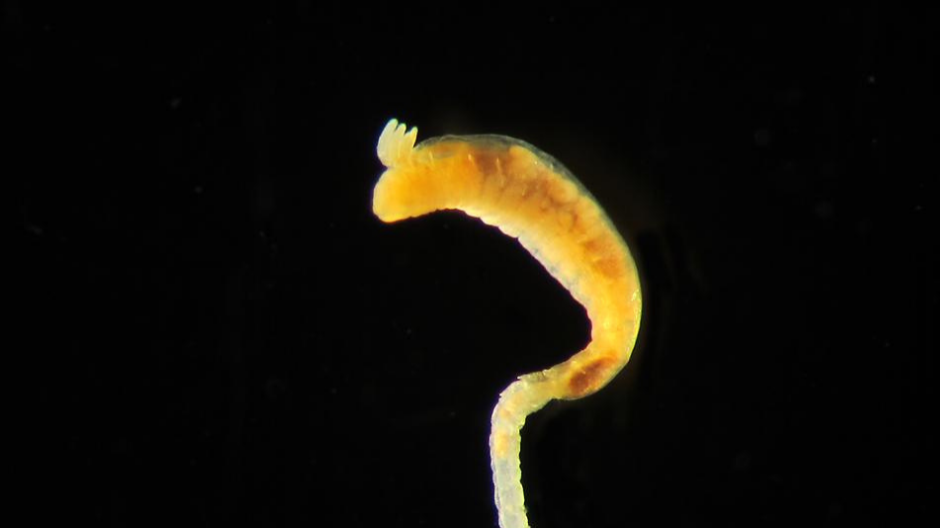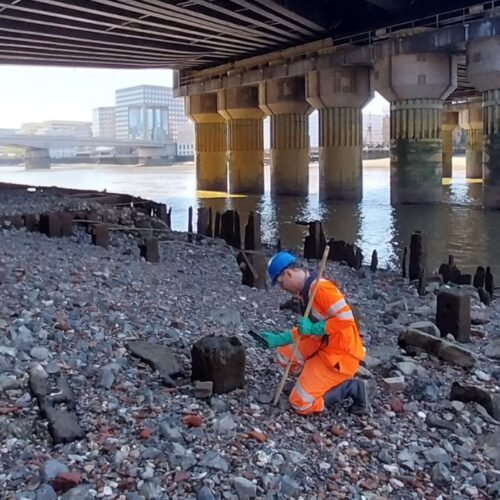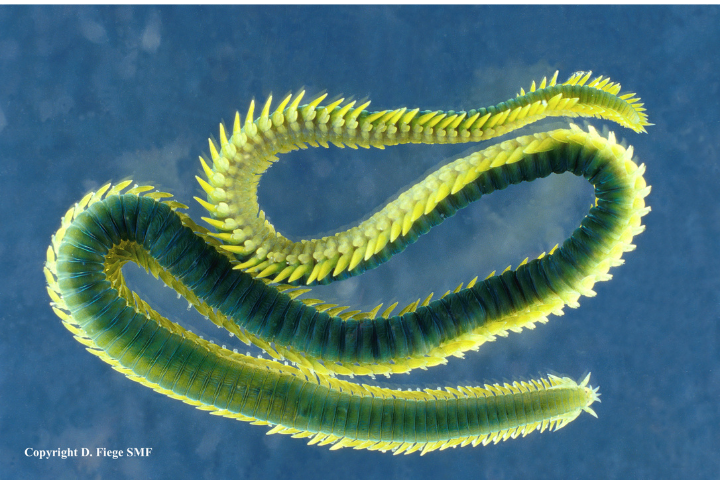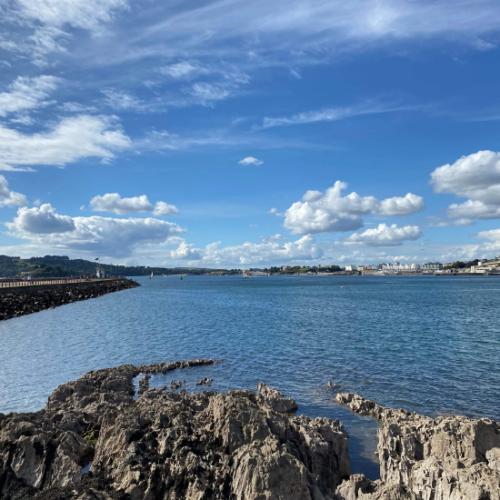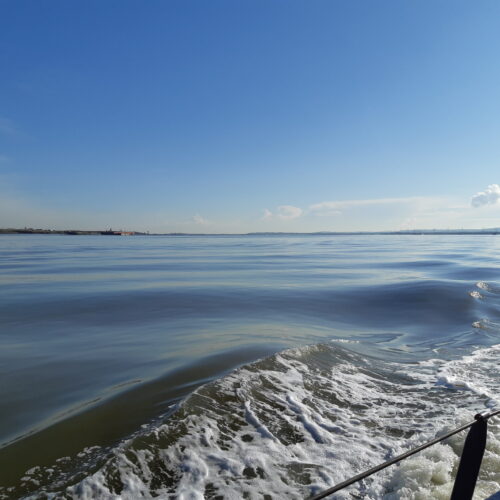If you’ve ever looked out across a mudflat you could be forgiven for thinking it was quite an unremarkable habitat. However, these areas are often filled with invertebrate life which can be uncovered by simply scratching the surface, quite literally. Within the mud of tidal estuaries and coastal lagoons there can be thousands of individual animals in every square metre of sediment. The combination of nutrient input from rivers and regular flooding during the tidal cycle allows these large invertebrate communities to thrive. They in turn feed larger animals, such as fish, and provide crucial feeding grounds for wading birds during low tide.
Due to the importance of mudflats, estuaries and coastal lagoons to both wildlife and humans, these habitats are protected under Annex 1 of the Habitats Directive and can be home to several species of protected invertebrates. In addition, mudflats are classified as priority habitats under the UK Biodiversity Action Plan.
Alkmaria romijni, the tentacled lagoon worm, is a polychaete (bristle worm) in the family Ampharetidae. It is a small species, reaching only 5 mm in length, but despite its modest size it is still considered important enough to be specifically protected.
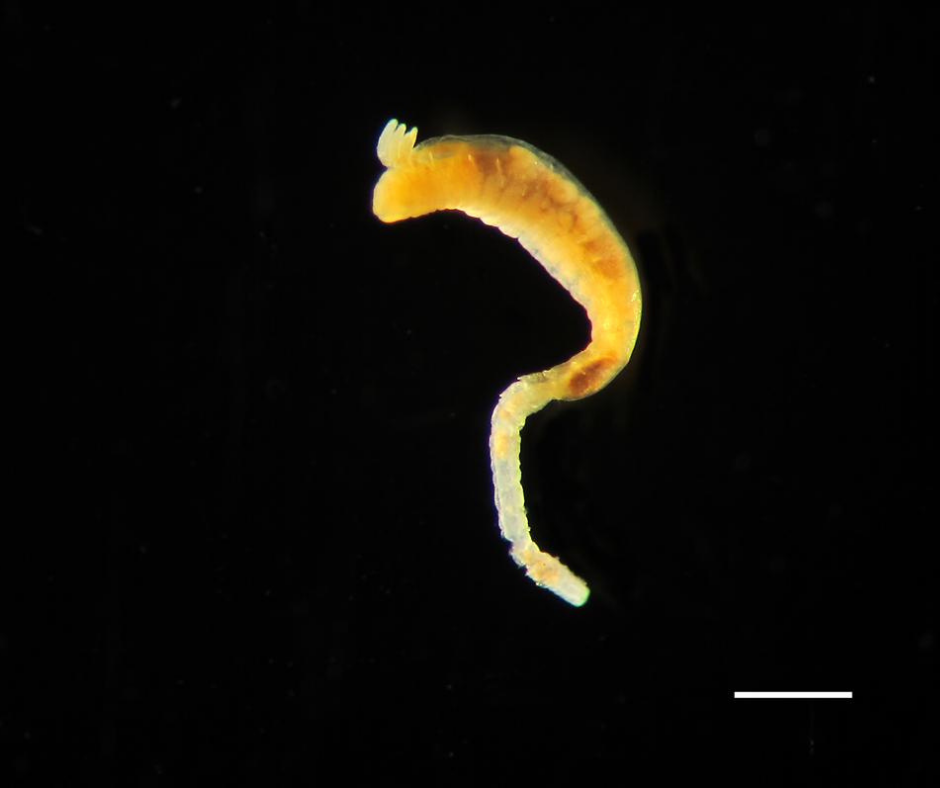
Alkmaria romijni scale 1mm © NRW
The tentacled lagoon worm spends its entire life either on the surface or partly buried in sediment within tubes, which it builds by gluing sediment together. The worms use the tentacles around their mouths to feed on detritus which has settled on the sediment surface near their tubes.
Previously believed to be a lagoon specialist species, A. romijni has been found to inhabit a wider range of low salinity environments than lagoons alone. However, the species is still confined to sheltered muddy habitats. Within the UK, A. romijni can be found across the Southern coast, as far north as Pembrokeshire on the West coast and up to the Humber estuary on the East coast1. The pictured specimen is from the Milford Haven Waterway in Pembrokeshire; it was found during the analysis of macrobenthic samples that Thomson conducted on behalf of Natural Resources Wales (NRW).
In areas where A. romijni occur they can reach very high abundances and may even become the dominant taxa within an area2. However, unlike most polychaetes, they lack a planktonic larval stage. Instead, the larvae develop inside the mother and then live within her tube for around 12 days before moving onto the surface of the mud. These larvae then build a tube of their own at around 20 days old3. Because the larvae do not spend any time suspended in the plankton, the species cannot easily disperse over large distances, making them highly vulnerable to habitat disturbance and degradation.
Due to their vulnerability, A. romijni is listed in the Wildlife and Countryside Act 1981 (Schedule 5, Section 9), which gives it protection from being killed, injured, or taken as well as protecting its habitat from damage or destruction. It is also classified as nationally scarce because it has been recorded at fewer than 30 sites around the UK.
Though these worms are small, they can have significant impacts; in 2003 construction of a bridge on the M2 motorway in Kent was temporarily suspended when A. romijni were discovered living in the saltmarsh along the route of the motorway. Other developers have been required to translocate sediment known to contain A. romijni to preserve known populations of the lagoon worm, to allow their developments to continue. When populations are translocated, the receptor site must be carefully selected to ensure that physical characteristics such as the level of wave exposure, tidal currents, salinity, sediment type and level of moisture retention are as close to the original habitat as possible.
Despite currently being assigned as nationally scarce, it may be that the occurrence of A. romijni is underreported4. This is possible because even adult worms are so small and accurate identification of ampharetid worms at this size requires a high level of expertise and experience. The Thomson marine team are adept at identifying all polychaetes, and ampharetids in particular, having even described a new species in the Ampharetidae family.
Even if, in time, A. romijni is shown to be more widespread than currently thought, we’d be pleased at the success of this cute little worm; small but mighty!
References
- https://species.nbnatlas.org/species/NBNSYS0000188454#overview [accessed 05/01/2020]
- Silva, A.C.F., Tavares, P., Shapouri, M., Stigter, T.Y., Monteiro, J.P., Machado, M., da Fonseca, L.C. and Ribeiro, L., 2012. Estuarine biodiversity as an indicator of groundwater discharge. Estuarine, Coastal and Shelf Science, 97, pp.38-43.
- Cazaux, C., 1982. Développement larvaire de l’Ampharetidae lagunaire Alkmaria romijni Horst, 1919. Cahiers de Biologie Marine, 23(2), pp.143-157.
- Gilliland, P.M. and Sanderson, W.G., 2000. Re‐evaluation of marine benthic species of nature conservation importance: a new perspective on certain ‘lagoonal specialists’ with particular emphasis on Alkmaria romijni Horst (Polychaeta: Ampharetidae). Aquatic Conservation: Marine and Freshwater Ecosystems, 10(1), pp.1-12.
